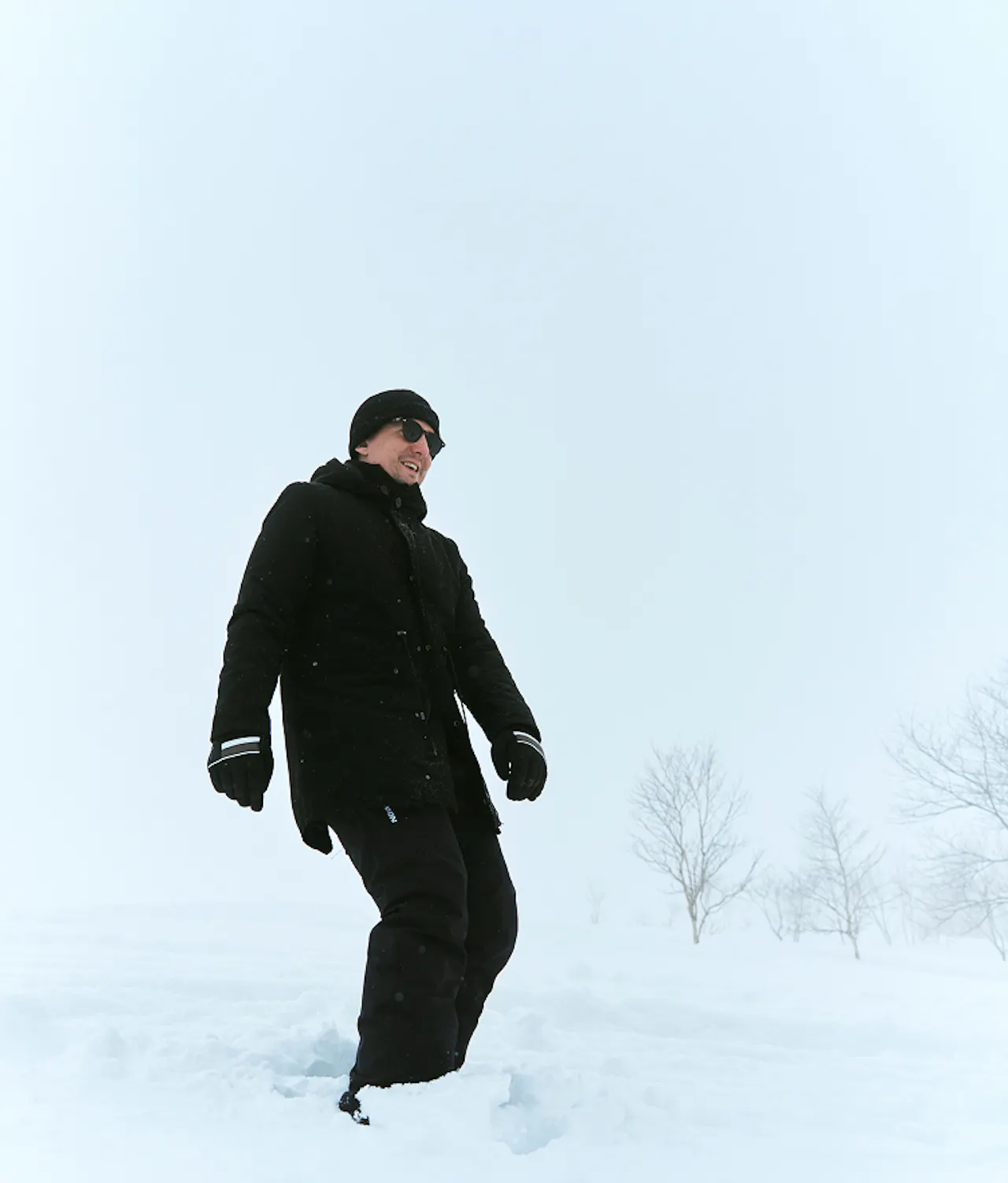
Vol.19
Architecture born of dialogue with the land, resonating with nature.
Richard Wood(Snøhetta)
NOT A HOTEL RUSUTSU is more than a mountain retreat. It is a seamless integration of nature, design, and the art of living. Designed by Snøhetta, an international architecture and design firm known for its dialogue-driven approach and transdisciplinary practice, NOT A HOTEL RUSUTSU invites guests into a world where architecture and landscape merge, solitude and gathering intertwine, and mind, body, and spirit find equilibrium. Nestled in the beautiful landscape of Hokkaido’s Rusutsu Resort in northern Japan, this sanctuary overlooks iconic Mount Yotei and offers an experience that evolves with the seasons — one that seeks not just elevation, but a sense of zenith, where design, nature, and human experience reach their highest expression.
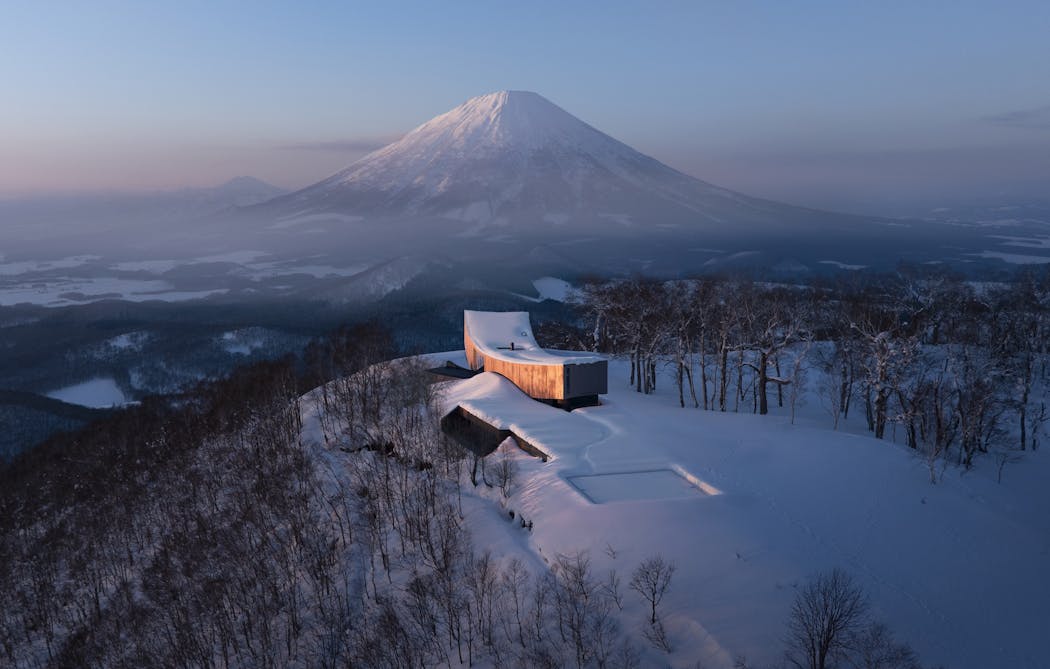
Listening to What the Land Has to Say
“We wanted the design to feel like an extension of the mountain itself,” explains Richard Wood, Managing Director Asia at Snøhetta and the Project Lead of the project. “Rather than imposing architecture onto the land, our goal was to create something that feels natural, something that belongs here.” Rusutsu’s breathtaking environment was not just a backdrop but an active participant in the design process. The retreat was shaped to embrace the mountain’s contours, responding to the shifting seasons and the rhythms of nature. The distinctive architecture maximizes natural light, panoramic views, and seamless transitions between indoor and outdoor spaces, whether through expansive windows, the open-air terrace, or the outdoor onsen that allows guests to soak in the elements. “In winter, the home becomes a warm, sheltered haven against the snow,” says Richard. “In summer, the same spaces open up, breathing in the fresh mountain air. This adaptability was at the heart of our design approach.”

The scene when the Snøhetta design team visited the site.
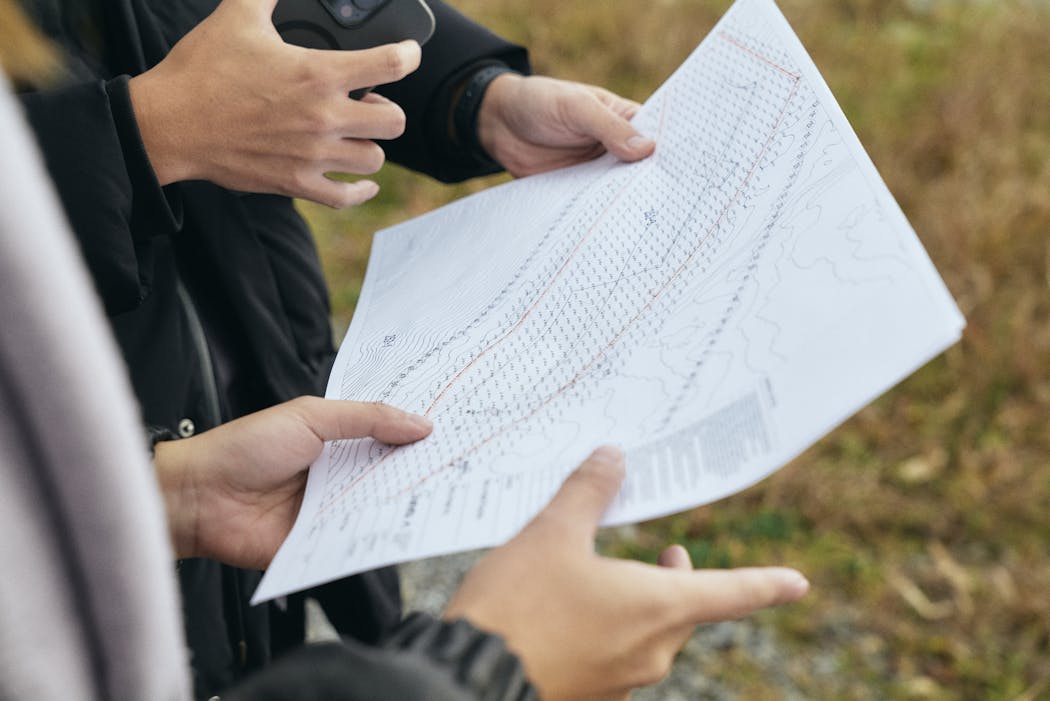

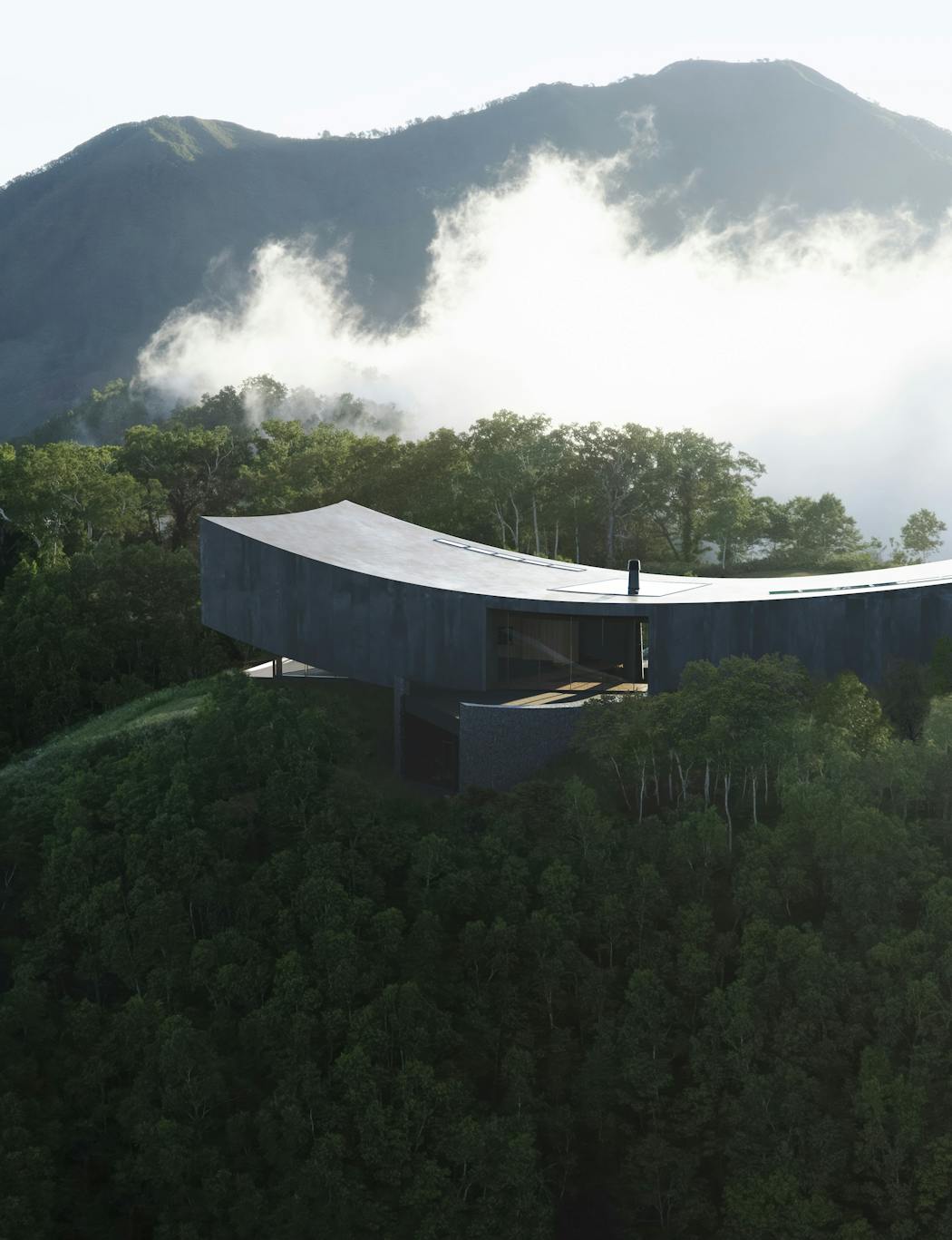
Discovering Emotion and Landscape Through Architecture
The Snøhetta team has long embraced the idea of pilgrimage, both as a practice and a philosophy. Every two years, their entire team across eight studios gathers to climb the towering Snøhetta Mountain in Norway, the peak that gave the firm its name. This journey is more than just a physical ascent; it’s a ritual of shared experience, a moment to reconnect with nature, each other, and the essence of their work. A similar spirit permeates NOT A HOTEL RUSUTSU. Reaching this retreat is itself a journey, one that begins at the base of Rusutsu Resort and gradually leaves behind the lively resort village. As the car winds its way upward, the scenery transforms, the built environment giving way to open sky and the vast, quiet presence of the mountain. Here, at the mountain’s edge, NOT A HOTEL RUSUTSU stands, immersed in its surroundings, designed not as an escape from nature but as an extension of it. Just as the climb to Snøhetta Mountain strengthens bonds among colleagues, the path to NOT A HOTEL RUSUTSU fosters its own kind of shared experience, creating lasting memories for those who make the journey.
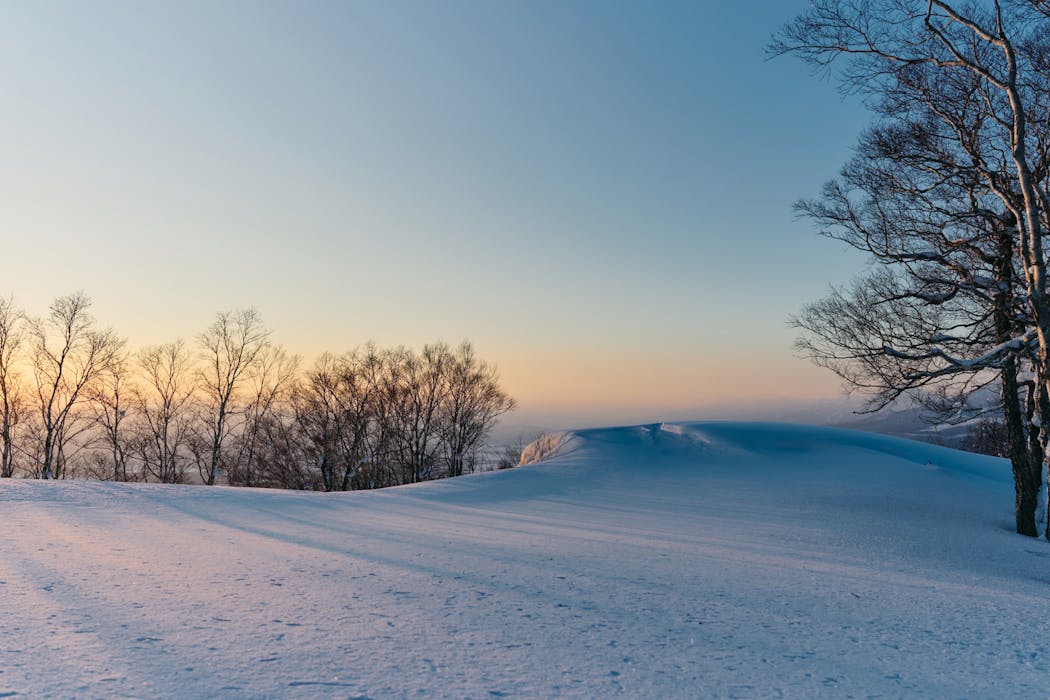
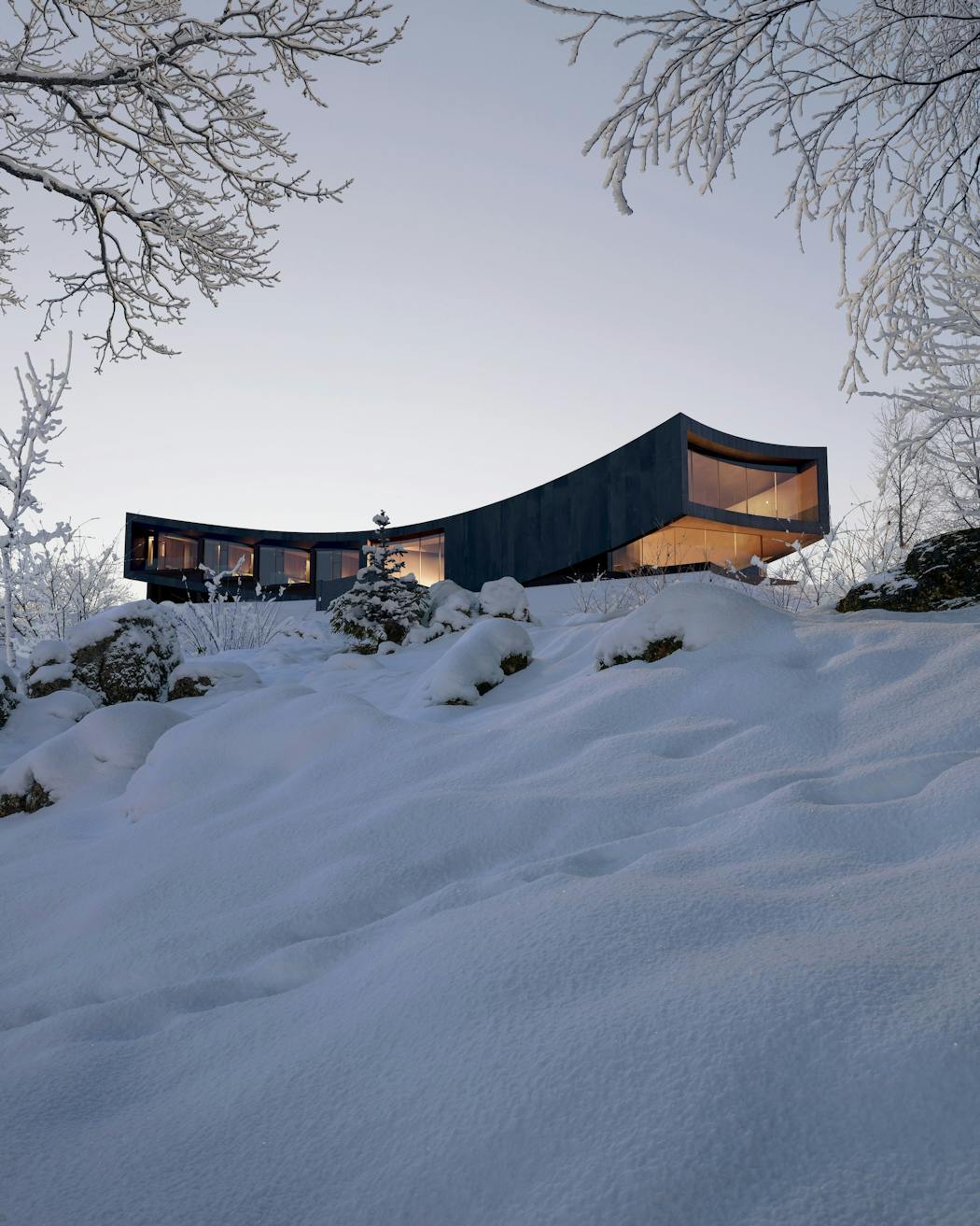
This experience is further deepened through the building’s homage to the site’s topography. As guests enter from the rear and gradually descend through the home, their horizon line gently shifts — bringing them closer to the earth and offering a tactile relationship with the landscape. Then, as they approach Mount Yotei, the architecture lifts again, expanding their view and reconnecting them with the sky. These sectional transitions not only respond to the terrain, but also guide the emotional rhythm of the journey — reminding guests that space is not static, but something to be discovered through movement.
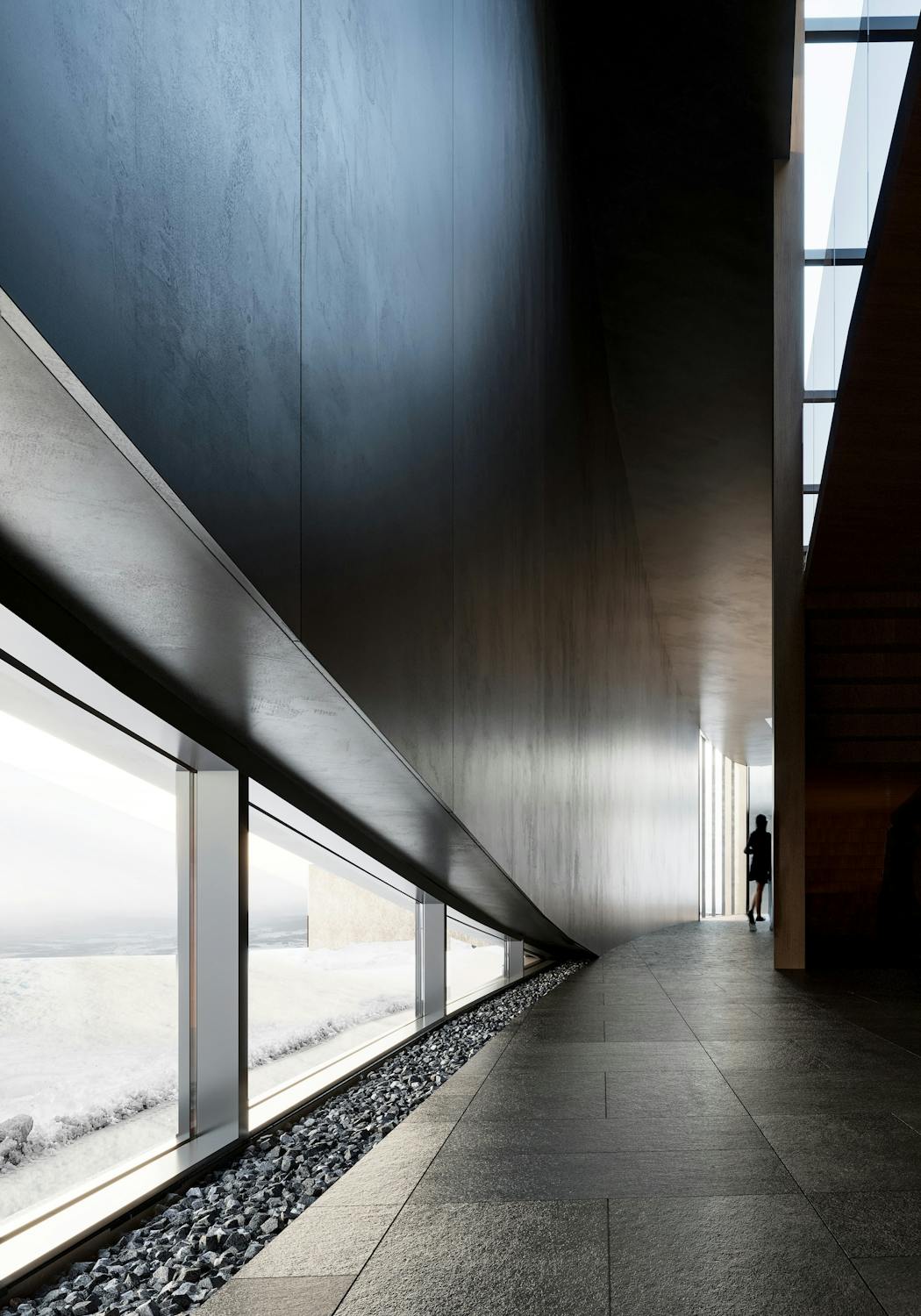
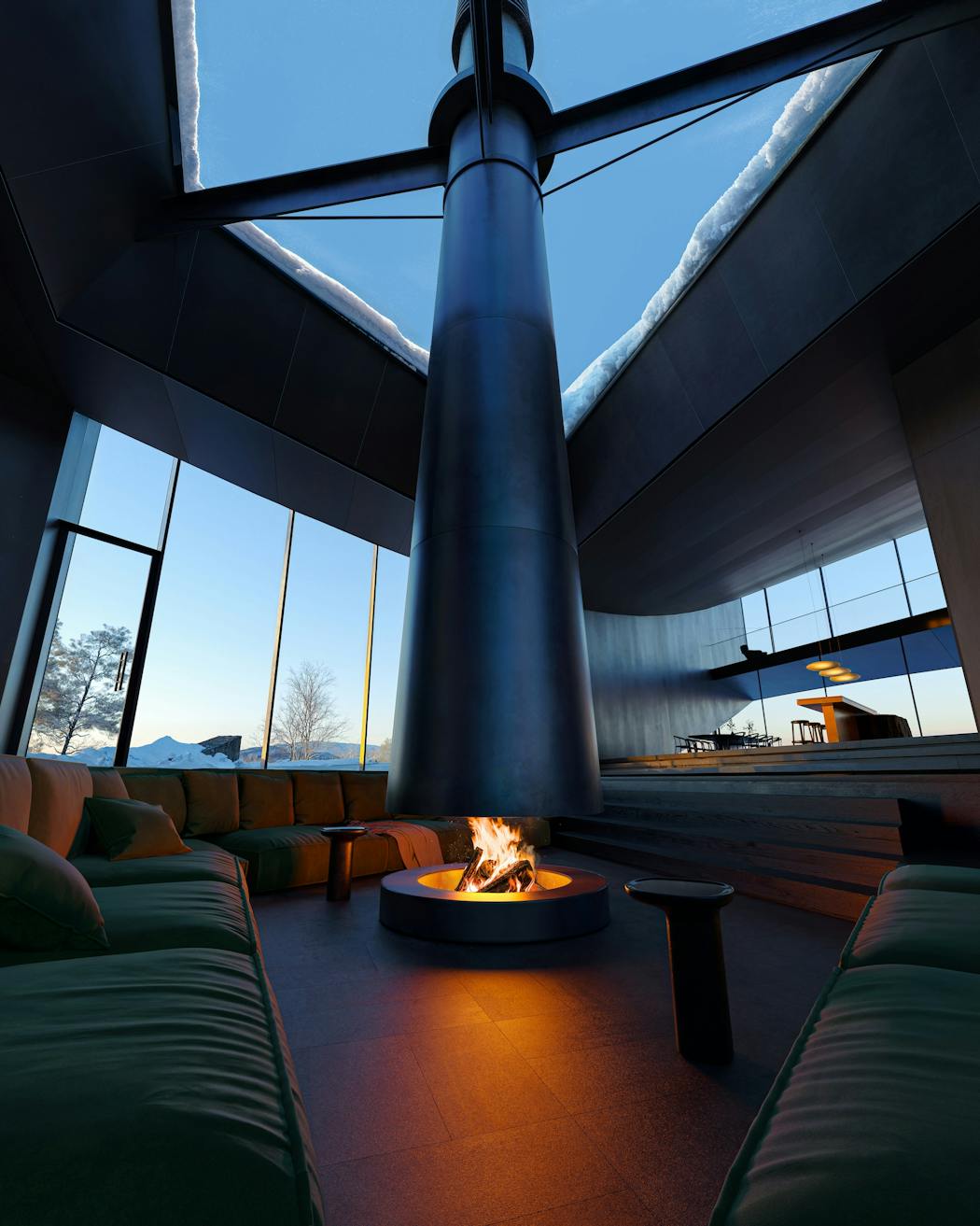

A Space for Both Stillness and Connection
NOT A HOTEL RUSUTSU is designed to support both solitude and shared experiences, offering a home that invites introspection and conversation, tranquility and celebration. Guests can move effortlessly between personal retreat and communal living, shaping their stay according to their needs. “Here, you can sit by yourself, watching the snowfall in complete silence, or you can gather with friends by the fire, sharing stories late into the night,” says Richard. “Both experiences are equally important.” Each space within the home is designed with a purpose, creating a balance between mind, body, and spirit: Mind: The living room, dining room, and lounge foster intellectual and social connection, serving as spaces for thought, engagement, and dialogue. Body: The gym, sauna, and onsen provide areas for physical renewal and relaxation, encouraging movement and well-being. Spirit: The bedrooms, nestled into the mountain’s contours, offer quiet sanctuaries for deep rest and reflection.
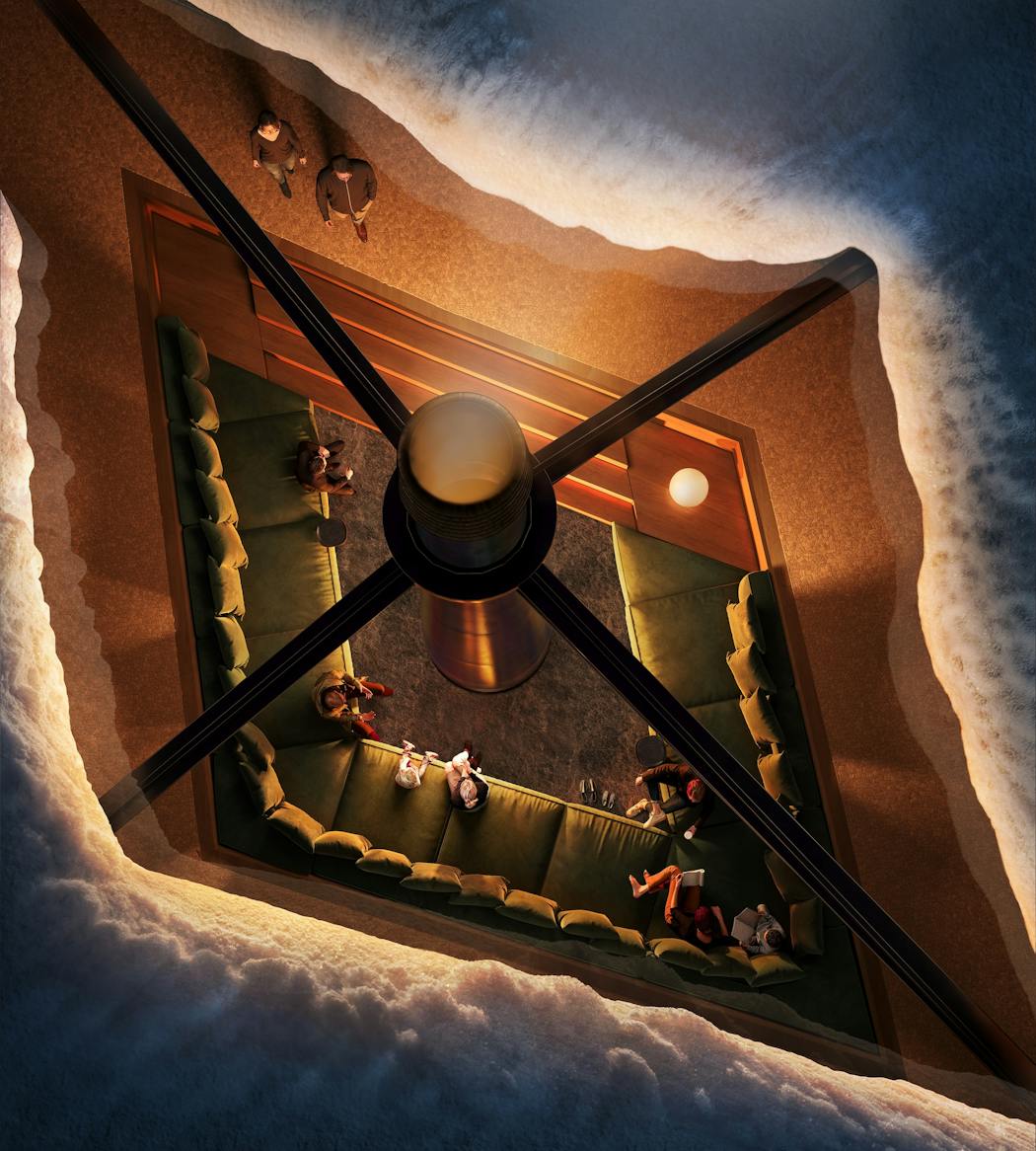
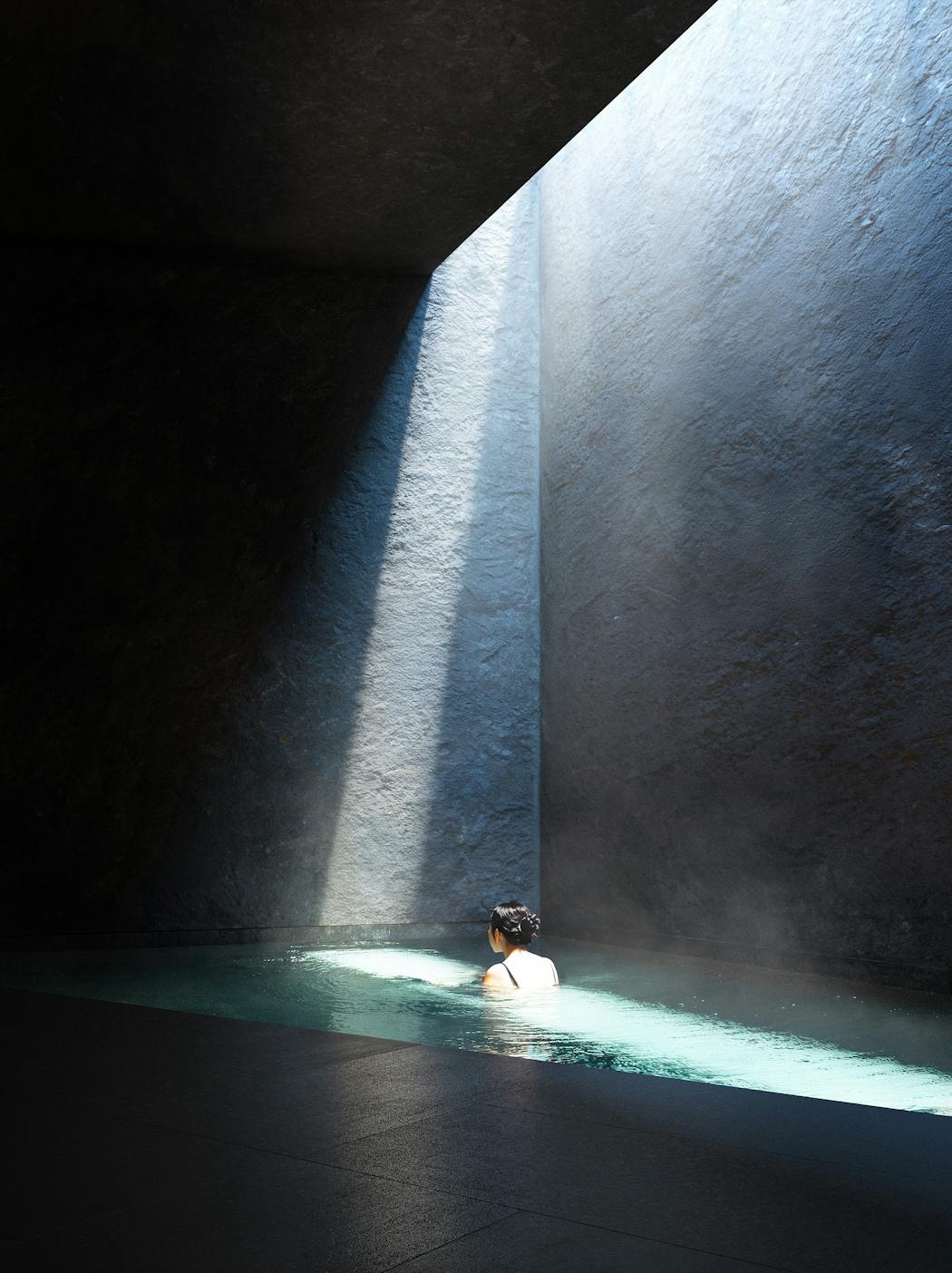
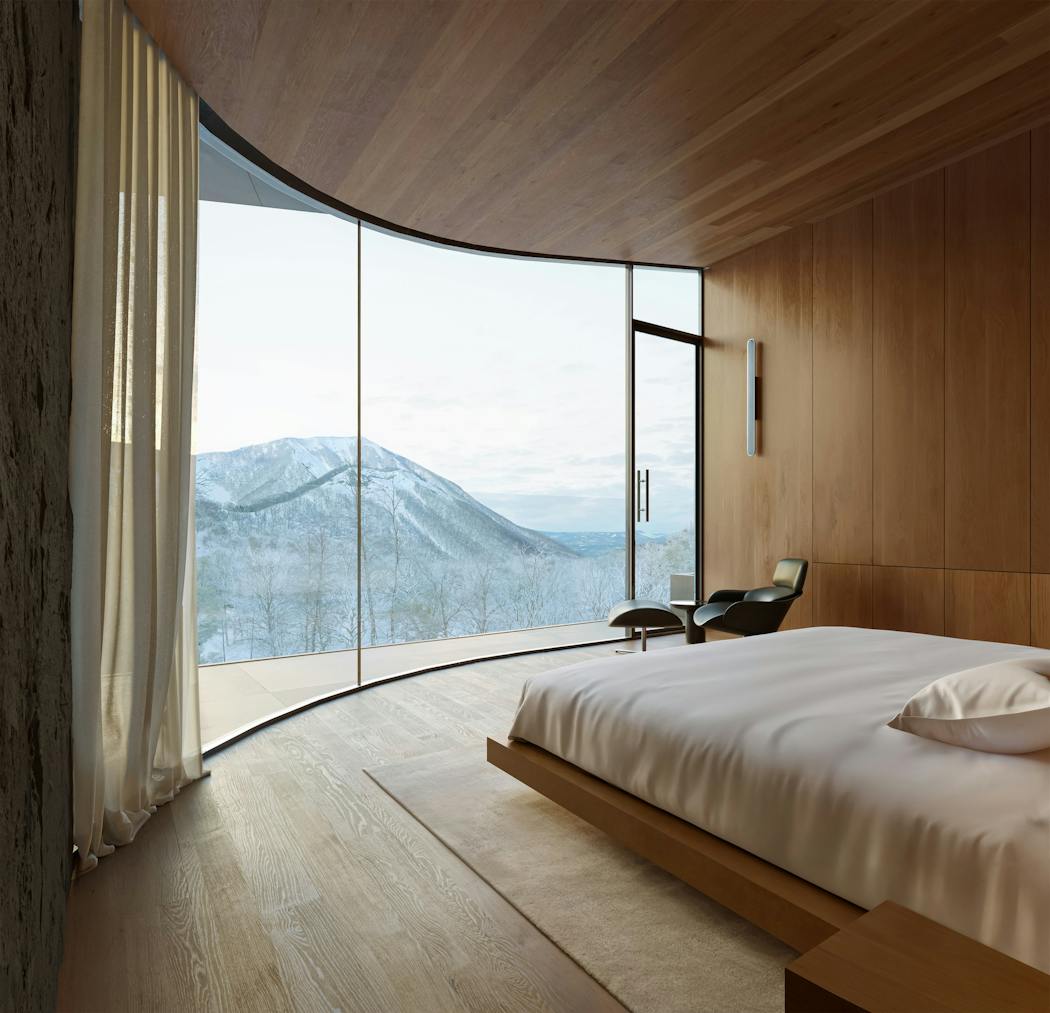
This sensitivity to well-being is also reflected in the project's elemental approach. From the outset, the design team sought to engage with the raw sensations of the environment — its temperature, light, and sound — by incorporating fundamental elements such as fire, water, stone, heat, and cold. These elements informed not only the material palette but also the spatial programming of the home. This can be seen in the architectural form composed of two contrasting bar volumes: one embedded within the mountain, evoking a sense of grounding and immersion in the landscape, and another elevated above, sculptural in form and oriented toward the sky, each offering a distinct atmosphere, yet both reinforcing the duality of introspection and connection that defines the Rusutsu experience.
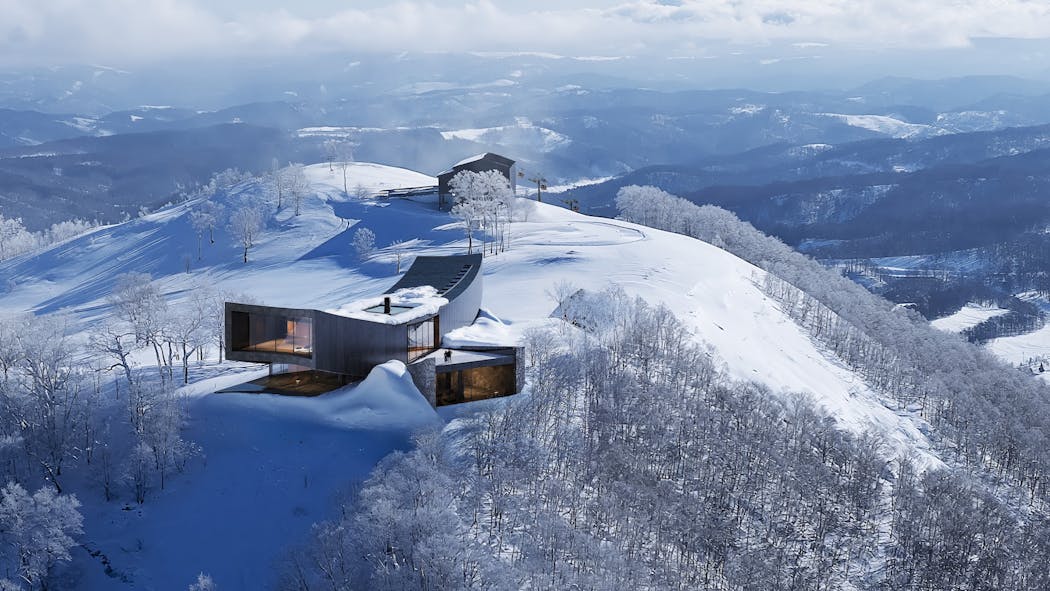
Materiality and the Passage of Time
The design blurs the boundaries between inside and outside, allowing nature to become an integral part of the experience. Expansive windows, open-air spaces, and the careful use of natural materials like stone and wood reinforce the connection to the surrounding landscape. This holistic approach to architecture ensures that every aspect of the home enhances well-being, creating an environment that evolves with the seasons and fosters both solitude and togetherness in equal measure. A commitment to natural materials grounds the retreat in its surroundings. Stone, wood, metal, and glass were chosen not only for their aesthetic and tactile qualities but also for their ability to evolve over time. The materials will weather, shift, and change, much like the mountain itself, becoming richer with each passing season. Large glass panels dissolve the boundaries between inside and outside, framing the changing landscape like a living painting. The open-air terrace and bathing spaces further emphasize this relationship, creating moments where guests are enveloped by nature while still feeling protected within the structure.

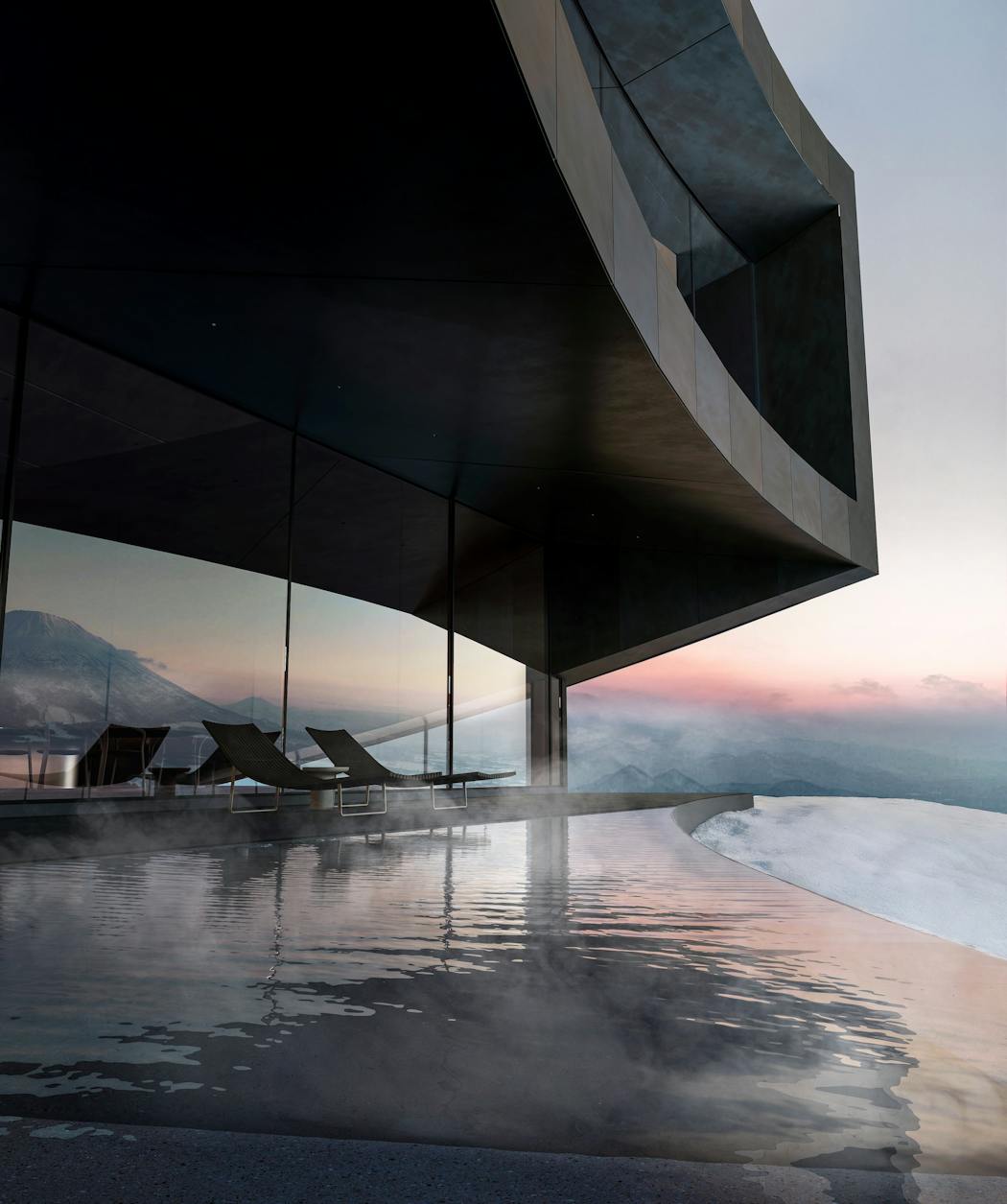
The Experience of Reaching the Zenith
The spatial design draws inspiration from the concept of zenith — the highest point above a specific location on the celestial sphere. This idea is reflected not just in the home’s elevated setting but in its ability to heighten the human experience, creating spaces that inspire clarity, awareness, and connection. The home invites guests to pause, reflect, and engage fully with their surroundings, whether skiing directly from the ski lounge, hiking through the lush summer landscape, or simply watching the sunrise from the warmth of the bedroom. Every element is designed to foster a sense of presence, ensuring that each moment, like the changing seasons, feels distinct and meaningful. “At the center of the project is the communal area around the fireplace, which extends into the very core of the building, connecting the underground spa with the open spaces above. In a way, this creates a sense of zenith; standing at the meeting point of two junctures, one rooted in the mountain, the other open to the sky.”


This interplay between earth and sky defines the experience, making the home not just a place of retreat but a space where nature, architecture, and human presence converge in harmonious balance. More than just a physical presence, NOT A HOTEL RUSUTSU is an ongoing conversation between architecture and nature, between stillness and movement, between people and space. As Richard and Snøhetta team envisioned, it is a place that allows guests to define their own experience. A summit, a sanctuary, a home. The only question that remains: How will you experience NOT A HOTEL RUSUTSU?
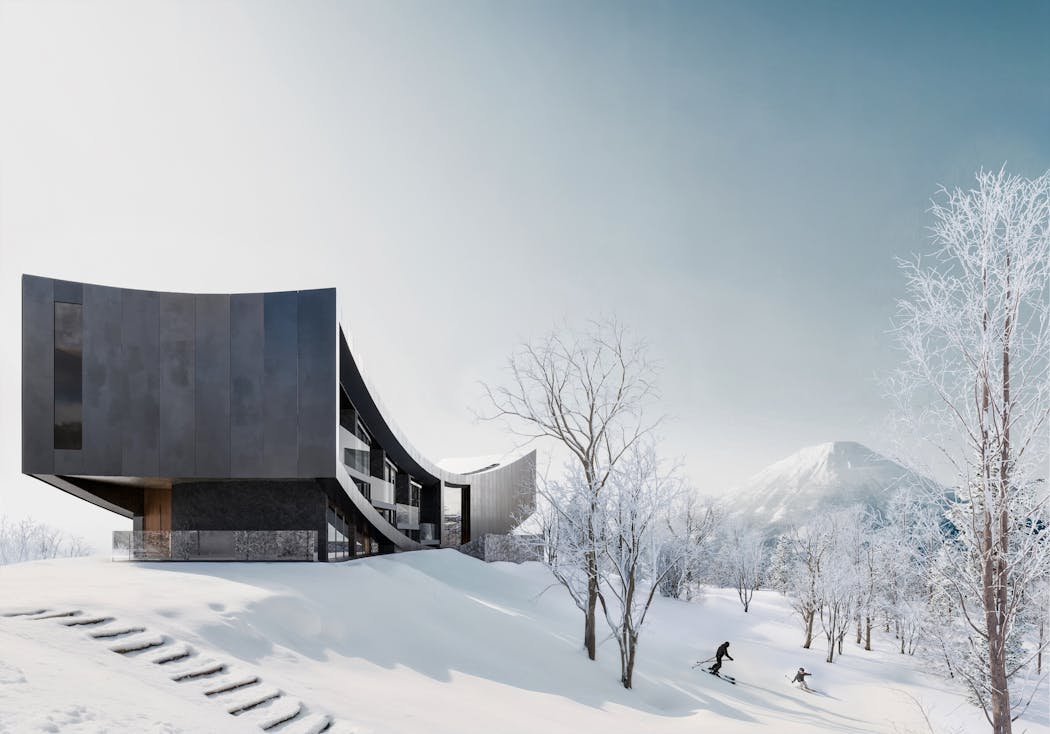

Snøhetta
Snøhetta is a transdisciplinary practice including architecture, landscape architecture, interior architecture, art, product design, graphic and digital design, often integrating a combination of disciplines across its projects. From the beginning in Norway in 1989, Snøhetta’s approach has been framed by environmental and cultural sensitivity, inspired by the Brundtland Commission’s UN report on sustainability, released in 1987. Snøhetta’s first significant commission was in 1989 for Bibliotheca Alexandrina, reviving the ancient library in Alexandria, Egypt. This was followed by commissions for the Norwegian National Opera and Ballet in Oslo and the National September 11 Memorial Museum Pavilion in New York, followed by projects on all scales around the globe. Today, Snøhetta has more than 320 employees from 40 nations across eight regional studios spanning from Oslo to New York, Innsbruck, Paris, Adelaide, Melbourne, Hong Kong, and Shenzhen.
WORKS
Shibuya Upper West Project
Viewpoint Snøhetta
Norwegian National Opera and Ballet
Bibliotheca Alexandrina
STAFF
Text: Jeremy Kuhles
Photo: Yuka Ito(NewColor inc.)



